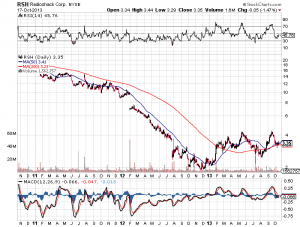Why?
Because the stock market is a much more complex discounting mechanism. The stock market constantly discounts fundamental data, human psychology and future projections into any given stock price. During this process many errors are possible. It could based on simple misunderstanding of the fundamental data or a negative psychological mood of the overall crowd or due to a market correction/surge. As such, stocks end up being either…..
- Significantly Undervalued $25
- Undervalued $50
- Properly Valued $100
- Overpriced $150
- Speculatively Overpriced $250
Obviously, as value investors we are interested in the first two categories because such stock give us the best margin of safety. Yet, that doesn’t necessarily mean that the margin of safety you are able to obtain will automatically become your profit margin. For example, if you have bought an “Undervalued” stock at $50 giving you a 50% Margin of safety, it doesn’t mean that the stock will simply appreciate to $100 over a certain period of time so you can sell it at 100% profit. It should, but it doesn’t mean that it will.
Many outcomes are possible here. Yes, if you have done your work right, this particular stock should appreciate to its true value of $100. However, the path it takes is unknown. It could decline even further to $25 before surging back to $100. It can stay at $50 for a couple of years before surging all the way to $250. Should you sell at a $100 or keep the stock in your portfolio due to improving company fundamentals?
As you can see there are way too many possible outcomes here to clearly define if your margin of safety is your profit margin. That is why it is best to look at the Margin of Safety as your insurance policy as opposed to your profit center. The profit or loss that will eventually come from your investment can realize itself in many different ways, yet there is only one Margin Of Safety and it is clearly defined. Now, let’s take a look at a real life margin of safety example and how to apply it to an individual stock.
(*I will keep the analysis very simple here without going into an in-depth analysis and/or valuation work).
- Date: 10/18/2013
- Company Name: RadioShack Corp (RSH)
- Stock Symbol: RSH
- Stock Price: $3.35
- Market Value: $334 Million
- Enterprise Value: $613 Million
- Price/Book Ratio: 0.67
- Revenue:$ 4.19 Billion
- Net Loss: ($206 Million)
- Total Cash: $432 Million
- Total Debt: $712 Million
A stock that just 3 years ago was selling at close to $25, is now selling at $3.35. That is a about an 85% decline in value for a famous brand name we all know. This type of a situation (significant decline and strong brand name) should definitely peak an interest of a value investor. As mentioned earlier, there could be a million different reasons of why this stock has declined so much, but for the sake of simplicity and our margin of safety discussion lets simply look at how much (if any) margin of safety does this stock offer.
Did you enjoy this article? If so, please share our blog with your friends as we try to get traction. Gratitude!!!

